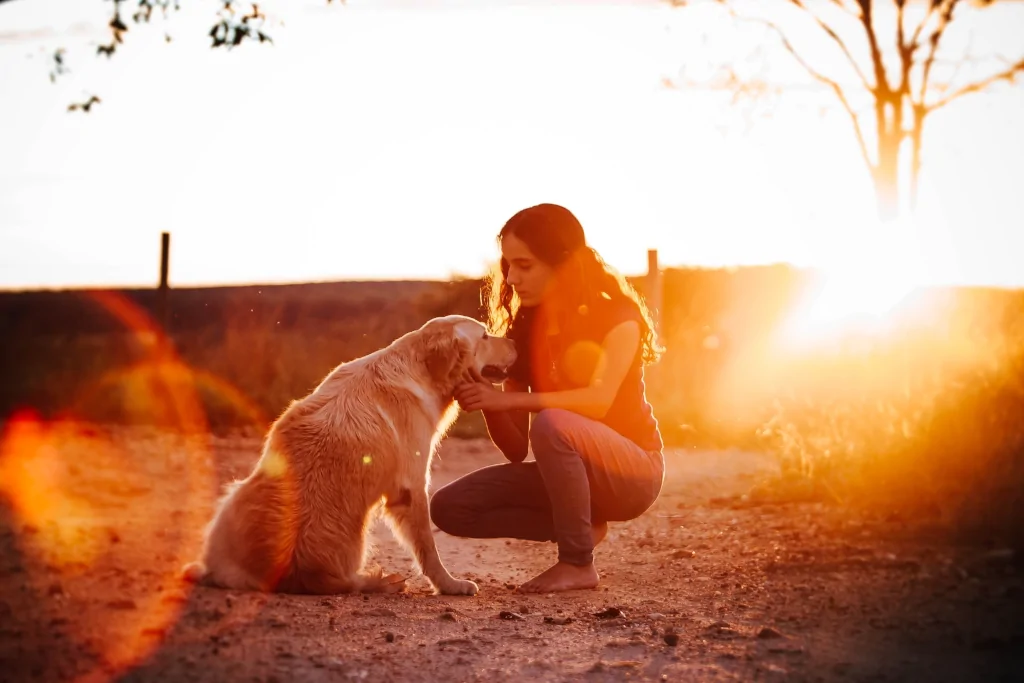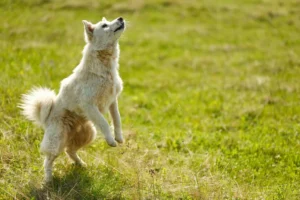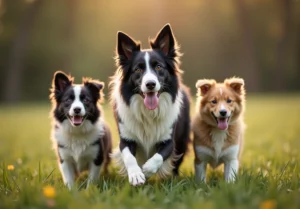Are you looking for a fun, engaging trick to teach your furry friend that will not only strengthen your bond but also provide mental stimulation? You’ve come to the right place!
Teaching your dog to spin or twirl is an excellent way to keep them entertained and challenge their brains, all while showcasing their impressive agility. Not to mention, this trick is sure to grab the attention and admiration of friends and family.
So, let’s dive in and discover the secrets to mastering the spin or twirl trick with your canine companion!

Why Teach Your Dog to Spin or Twirl?
Teaching your dog to spin or twirl has multiple benefits beyond just entertainment value. Firstly, it’s a great way to improve your dog’s coordination and motor skills.
This trick also provides mental stimulation, which helps prevent boredom and undesirable behaviors. Plus, learning new tricks is an excellent opportunity to strengthen the bond between you and your dog, as you work together to achieve a common goal.
With a little patience and persistence, you’ll have a spinning superstar on your hands in no time!
Set the Stage: Create the Right Environment for Training
Here are a few things to prepare and keep in mind before you begin:
- Choose a quiet, familiar, and distraction-free space to conduct your training sessions, as this will help your dog stay focused on the task at hand.
- Ensure there’s enough room for your dog to move around comfortably without bumping into furniture or other objects.
- Also, schedule training sessions during a time when your dog is alert and receptive to learning – not right after a big meal or during their usual nap time.
With the right environment in place, you’ll be well on your way to teaching your dog this delightful new trick. Let’s jump in!
Step-By-Step: Teaching the Spin or Twirl Trick
Step 1: Choose a Cue Word or Hand Signal
To begin teaching your dog the spin or twirl trick, decide on a cue word (such as “Spin!” or “Twirl!”) or a hand signal that you will use consistently to signal the trick. Consistency is key, as this will help your dog understand the desired action more quickly.
Step 2: Lure Your Dog with a Treat
Start with your dog standing in front of you, then show them a treat in your hand.
Hold the treat close to their nose and slowly move your hand in a circular motion, either clockwise or counterclockwise, depending on the direction you want your dog to spin. Keep the treat at your dog’s nose level so they can easily follow it.
Step 3: Praise and Reward
As your dog completes a full circle, immediately praise them with an enthusiastic “Yes!” or a click from a clicker, followed by giving them the treat. This will help reinforce the connection between the cue and the action.
Step 4: Gradually Add the Cue Word or Hand Signal
Once your dog has successfully followed the treat in a circular motion several times, begin to introduce the cue word or hand signal.
Say the word or show the signal as your dog starts to spin, and continue to reward them with treats and praise as they complete the spin.
Step 5: Practice and Fade Out the Lure
Continue practicing the trick, gradually reducing your reliance on the treat as a lure. Instead, rely more on the cue word or hand signal.
As your dog becomes more proficient, you can also start using variable reinforcement – rewarding them with a treat intermittently rather than every time they perform the trick.
Step 6: Add Variety and Challenge
Once your dog has mastered the spin or twirl trick in one direction, consider teaching them to spin in the opposite direction as well. This will add variety and challenge to their repertoire.
You can also practice the trick in different locations and around distractions to further solidify the behavior.

How to Troubleshoot Common Challenges
As you’re trying to teach your dog the Spin/Twirl trick, you’ll encounter obstacles. But don’t worry, these are normal. Here are five of the most common challenges and how to overcome them:
Challenge 1: Dog Gets Distracted or Loses Interest
To keep your dog engaged and focused during training, use high-value treats and keep the training sessions short and fun. If your dog seems to lose interest, end the session on a positive note and try again later when they’re more attentive.
Challenge 2: Dog Only Spins Halfway
If your dog only spins halfway, it’s possible that the treat lure or your hand movement is too fast. Slow down the movement and make sure your dog can follow the treat easily. Gradually increase the speed as they become more comfortable with the trick.
Challenge 3: Dog Moves in the Wrong Direction
If your dog consistently moves in the wrong direction, try using a clearer hand signal or a different cue word to avoid confusion. Be patient and consistent with your cues, and remember to reward your dog immediately when they perform the correct spin direction.
Challenge 4: Dog Sits or Lies Down Instead of Spinning
If your dog tends to sit or lie down during training, ensure that you’re holding the treat at the right height – not too high or too low – so your dog remains standing while spinning.
You may also need to break the trick down into smaller steps, rewarding your dog for partial spins before expecting a full spin.
Challenge 5: Dog Becomes Overexcited
Remember that these are quite normal, and if you address them with patience and consistency, you’ll help your dog overcome these challenges and successfully master the spin or twirl trick.
Celebrating Success: Rewarding Your Dog for a Job Well Done
Celebrating your dog’s success in learning a new trick is a crucial part of the bonding experience.
I remember when I first taught Sam to spin, and he finally got it after several sessions. We were at our local park, surrounded by a group of curious onlookers.
The moment Sam performed the perfect spin, I couldn’t help but burst into applause, and the onlookers joined in, too. Sam’s wagging tail and enthusiastic energy showed me just how much our joint accomplishment meant to him, and it remains a cherished memory for both of us.
This trick is common among certain dog breeds trained for circus performances. Explore these breeds in our detailed blog post about circus dog breeds.
This simple video can show you how to teach your dot to spin:
FAQs
What’s the difference between spin and twirl commands?
Spin and twirl commands are essentially the same trick, but they usually refer to spinning in different directions. For example, “spin” might indicate a clockwise turn, while “twirl” could signal a counterclockwise turn.
Is spinning safe for dogs with joint or hip issues?
Spinning can be safe for dogs with joint or hip issues if done in moderation and with care. However, always consult your veterinarian before teaching this trick to a dog with any health concerns, and adjust the training as needed to accommodate their physical limitations.
How can I make this trick more challenging for my dog?
To make the spin or twirl trick more challenging, try teaching your dog to spin in both directions, increase the speed of the spins, or combine the trick with other commands like “sit” or “down” in a sequence.
Can I use a toy instead of a treat as a reward?
Absolutely! If your dog is more motivated by toys than treats, feel free to use a favorite toy as a reward during training sessions. Just make sure the toy is easy to handle and doesn’t distract your dog from the task at hand.
Alex, a passionate animal lover, has experience in training and understanding animal behavior. As a proud pet parent to two dogs and three cats, he founded AnimalReport.net to share insights from animal experts and expand his knowledge of the animal kingdom.




